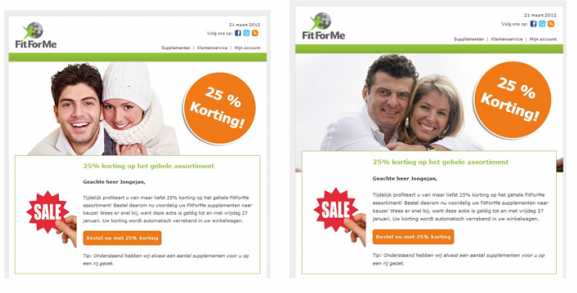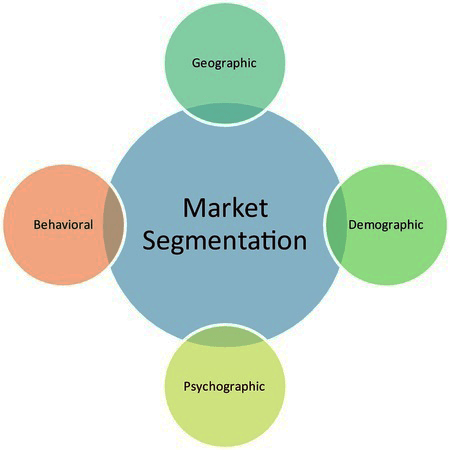Would you care about an email campaign that is promoting wool sweaters if you live in Phoenix, Arizona? Or, do you want to get an email on an event in Chicago if you live in Florida? Probably not. The message your sending to subscribers when you send them irrelevant information is, “You’re really not that important to us as a customer.” The first time, or maybe second or third if your lucky, your subscriber receives irrelevant information from you, they will:
A) Unsubscribe, or
B) Hit the “this is spam” link
With this in mind, you must know that it's now essential to be (and stay) relevant to the people you’re communicating with so your audience doesn’t unsubscribe from your communications, or worse, discount you as spam.
Marketing Sherpa conducted a study that showed 4 out of 10 subscribers reported that they've marked emails as spam simply because they were irrelevant. That’s an eye-opening statistic for email marketers because it can put your email program at risk if you’re not careful.
That same study Marketing Sherpa concluded that emails tailored to specific audiences get 50 percent more clicks than their counterparts. 50 percent is a pretty drastic jump – don't you think?
If you’re looking for more stats to back up the effectiveness of list segmentation, Lyris found that
- 39 % of marketers who segmented their email lists experienced higher open rates
- 28% experienced lower unsubscribe rates
- 24% experienced better deliverability and greater revenue
Looking at the graph below, you'll see that there are many more reasons to segment your email subscribers.
Are you scratching your head right now and wondering, “How can I segment my audience and give them the information they really want?” If so, you'll want to read this list of email marketing segmentation tips. We even broke it down by who you are marketing to – business-to-business (B2B) or business-to-consumer business (B2C). After all, when you segment your email subscribers, you cannot use a one size fits all approach.
Business-to-Business (B2B) – Segment Your Email Subscribers
Marketing to other businesses means you need to get to know those businesses to simply speak to their pain points. Where are they located? How many employees do they have? What is their company culture?
B2B is also more complex as you’re not speaking to just one buyer, you’re sometimes speaking to a myriad of buyers which could include technical specialists, accountants, and executive level decision makers. Given this, the buying cycle can be much longer.
These challenges make segmentation a critical component to satisfying needs profitably. Start with these four needs to segment your audience and you’ll be on the right track…
- Convenience (geography or language): Can your product or services help companies in a certain area of the world? Is there jargon, slang, or an entirely different language you can leverage to help you better communicate with your audience? Geography can be a telltale of many characteristics and should be at the top of your segmentation list.
- Firmographics or demographics (company size and product type): The type of company greatly affects how they buy. Bigger companies will purchase products and services differently than smaller companies. Smaller companies may need to outsource certain services where bigger companies already have a full staff to handle it. There is a multitude of differences when it comes to size and the type of business or industry they’re in.
- Behavior (price, deliver, and quality): Paying attention to how companies work with their partners or suppliers can be an important identifier in how to market to them. Some companies want more long-term relationships while others may be looking for the lowest cost or money-saving deals.
- Role-Based Needs (security, power, and esteem): Even though you’re marketing to a business, consider the people you’re reaching out to at that company. Each role is looking at the buying decision in a different frame of mind. The accountant may just see the numbers. The sales person may see potential in covering more ground with what you’re selling to meet his/her quota. Each role has a different need. Each person is trying to best succeed at their job. How can you speak to those needs and grab their attention?
Business-to-Consumers (B2C) – Segment Your Email Subscribers
Marketing directly to consumers may be slightly less complex, but it still comes with the obvious challenges. Everyone is different, which means segmentation is just as important in B2C marketing as it is in B2B.
Similar to B2B, there are certain needs that can help you segment your audience effectively:
-
Geographic: Not only can the simple characteristic of location tell you a lot about the language and lifestyle of those consumers, it can help you define the best time to post on social media or pinpoint what type of culture is most popular. Geography remains an important aspect of segmentation for B2B and B2C alike.
-
Demographic: This refers to distinguishing factors of your audience, such as age, gender, religion, income, and social class that may affect their buying habits.
Identifying demographics helps you in a couple ways. One of which is the economic factor or buying power. For example, you wouldn’t market expensive cars to teenagers because most don’t have the income, but you may target their parents.Secondly, gender and religion affect the decision to buy which has nothing to do with buying power. People may have the money, but it could be against their belief system to go through with the purchase.Also, by knowing the age of the prospects and customers you are sending your email campaigns to allows you to modify your images and messaging to appeal to your subscribers. In Email On Acid's blog article 8 Ways to Segment Your Email List to Maximize ROI, they use the example below.

Fit for Me was offering a promotion and knew their audience varied in age. Instead of creating separate campaigns for each age group, they simply switched out the image at the top of the email but kept everything else the same. This simple switch allowed the image to resonate with the different age groups that make up their email list.
- Psychographic: This is a tad broader when segmenting but can include buyer’s behavior, mentality, reactions to marketing activity, and ethics. It’s also harder to come by in your research unless you are directly surveying your customers (not a bad idea by the way). Speaking to the psychology and emotional aspects of consumers will help you in the long run and make sure your message is on topic, relevant, and valuable.

How to Segment Your Email Subscribers Across the Board
Let’s face it, whether you’re marketing to businesses or customers, you’re still marketing to people. So, although marketing to businesses and customers can be very different when segmenting, there are a few tried and true audience segmentation best practices that everyone can benefit from.
Well Maintained Contact Database
All of your work in segmenting won’t matter one bit if you don’t have a well-maintained contact database. Your database should contain the obvious contact details of a current phone number, email address and physical address. It should also include some tracking capability of their behavior that continues to segment your audience as you market to them, whether that’s clicking on an email or contacting you directly for a demo.
Automated solutions can help you achieve all of this on the backend, minimizing the amount of manual entry or updates that can cause major mishaps and error.
Research
Public resources are the best source of demographic information:
- The Bureau of Labor and Statistics (US)
- Chambers of Commerce
- National and International press coverage
- Industry and trade research
- Figures from trade fairs and exhibitions
- Annual Reports
There is also a wealth of information on social media sites, websites, and any other online sources that provide statistical data. Here are some examples:
- Customer forums and comments
- Corporate websites – team pages
Finally, conducting your own research directly with your current customers may be the best source of research you can do, but also the costliest and most time consuming. Focus groups can, however, help yield incredible insight into the thinking and priorities of your audience. Outside of just helping with audience segmentation, it can help you define your competitive advantage and overall brand positioning.
Analysis
Putting all of the pieces together is where you’ll be able to leverage segmentation data to your advantage. Major tip here is start small. Even if you segment your list based on one need, it can help your marketing significantly. Marketing Land does a great job outlining how to build a good email segmentation strategy.
As with anything in marketing, make sure you test out which segments work best for you and then change your ways if need be. There is no silver bullet in segmenting lists, but these best practices of list segmentation characteristics tricks will get you close.








